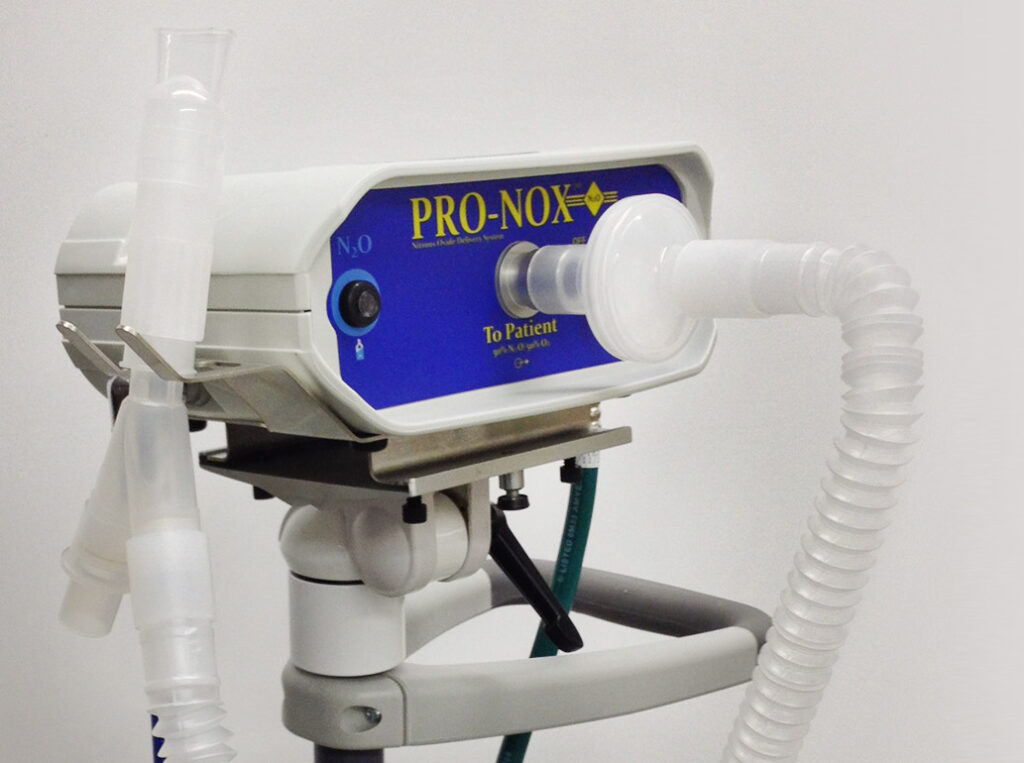


Whoever said “beauty is pain” clearly didn’t come to Blurr’d Lines. Here, we work to ensure all our patients are comfortable and relaxed throughout their treatment. But if you want a little extra relief from discomfort or anxiety, we offer Pro-Nox
— a fast-acting, inhaled sedative.
Pro-Nox is a blend of 50% oxygen and 50% nitrous oxide gas used to relieve pain and anxiety. You’ve probably heard of nitrous oxide — also known as “laughing gas” which is commonly used in dental procedures. It’s one of the oldest sedatives used in medicine, so you can rest assured that it’s completely safe.
There are a few benefits of using Pro-Nox over other pain relievers or sedatives (like Vicodin or Valium).
During the procedure, the patient holds a disposable mouthpiece with a hose that administers the nitrous oxide through a valve when the patient inhales. This puts the patient completely in control of how much nitrous oxide is used during the procedure. The calming and pain-reducing effects of Pro-Nox are felt almost immediately after inhaling.
The effects of Pro-Nox wear off in 5-10 minutes. Since the patient holds the mouthpiece used for inhalation, they can decide when they want to use more. This also means that the provider can continue working while the patient controls their own pain relief. One of the greatest benefits of the short-term effect of Pro-Nox is that the patient is fully capable of driving after the procedure, with no need to disrupt their day or arrange alternative transportation.
Pro-Nox is an out-of-pocket expense. That being said, the cost to add it to your procedure is quite minimal. Please inquire at your consultation for more specific pricing information.
Possible short term side effects of using Pro-Nox are dizziness, nausea, light-headedness, and unsteadiness.
Patients with anemia, vitamin B12 deficiency, or extreme chronic fatigue should not use Pro-Nox. It should also not be used during the first trimester of pregnancy. Caution should be used for patients with nasal obstruction, chronic obstructive pulmonary disease, active cystic fibrosis, recent tympanic membrane surgery, and claustrophobia.